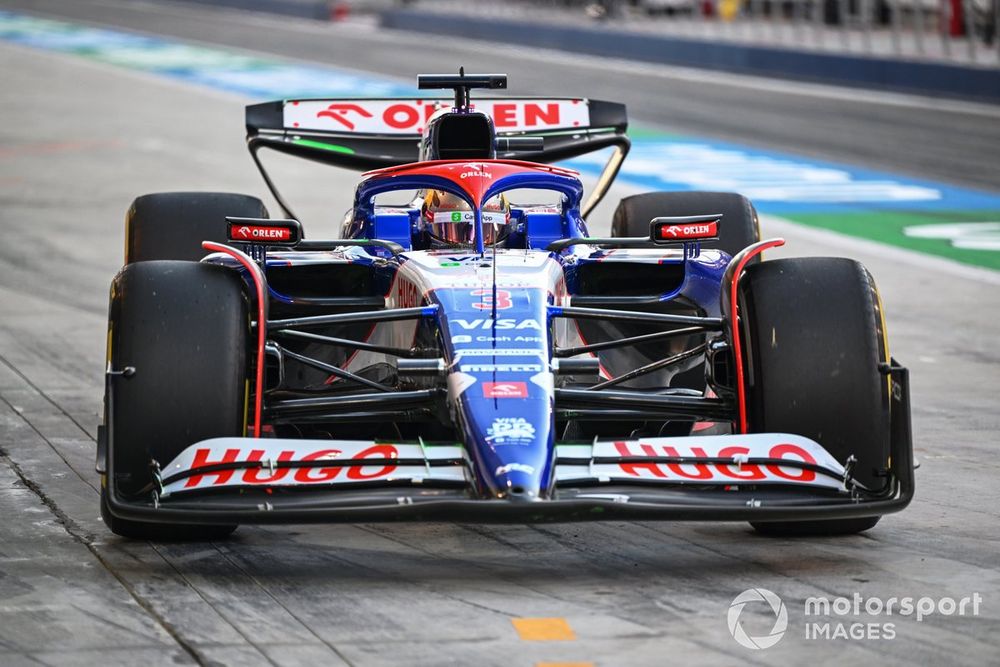F1 returns this week with pre-season testing, meaning cars will be back on track for the first time since 2023.
It has been almost three months since the Abu Dhabi Grand Prix and a lot has happened in the off-season.
Williams revealed it has kept Logan Sargeant for 2024, Lando Norris and Charles Leclerc both signed long-term contracts with their teams, while Lewis Hamilton announced a shock move to Ferrari for the 2025 season – not to forget the re-branding that’s happened at RB and Sauber.
Car launch season also took place, where each team revealed the look of its 2024 challenger with constructors like Sauber and RB overhauling their colour scheme.
Another big talking point of car launches though was push and pull-rods – discussing which team had adopted what type of suspension.
So, what is the difference between them both and why are they so important?
Daniel Ricciardo, VCARB 01
Photo by: Simon Galloway / Motorsport Images
What is the difference between a push-rod and pull-rod on an F1 car?
An F1 car’s suspension has an upper and lower wishbone – a carbon fibre bar that absorbs shock from the road – which connects the chassis to the wheel.
Between the wishbones, both at the front and rear, is a suspension rod – either a push-rod or a pull-rod – that connects the wheel to a horizontal torsion spring. The torsion spring stores and releases energy, while twisting when force is applied to it, and that helps to keep a car stable over bumpy surfaces.
A push-rod sits high up on the chassis where a diagonal rod then connects it to a low point of the wheel. So, over bumps or kerbs the wheel pushes on the torsion spring and that causes the push-rod to go upwards and towards the chassis.
That is the opposite to a pull-rod. A pull-rod sits low on the chassis where a diagonal rod then connects it to a higher point of the wheel. This means every time the car hits a bump or kerb, the wheel pulls on the torsion spring which causes the pull-rod to go up and outwards from the chassis.
Both configurations have many advantages and disadvantages. It simply depends on what a team wants, because the suspension must fit the aerodynamic concept of the whole car as it plays a role in directing airflow towards the sidepod and other areas.
So, for example, a pull-rod has better weight distribution because everything is run closer to the ground as heavy components are mounted…
Click Here to Read the Full Original Article at Autosport.com – Formula 1 – Stories…

